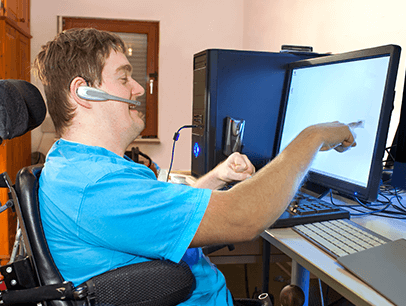Navigating the shoals of public communication today requires high emotional intelligence to ensure that everyone in your audience feels included. As Maria Cordova, president and founder of HumanageHR in Los Angeles, California, says, “We’ve all become increasingly aware of the importance of language in creating equitable and inclusive spaces. When language makes people feel they don’t belong, they do not speak up, and you lose out on their diverse perspectives and contributions.”
Your choice of words and images makes an impact, as well as your vocal tone and body language. Inclusive communicators know how to gauge their audience’s sensibilities and share a message that will engage without offending. How do they do it? Here are some suggestions:
1 Develop an embracing attitude.
It is hard to be inclusive when we consider our audience to be somehow “other”—that is, fundamentally different from us. To practice inclusive communication, you need to feel a sense of shared humanity with everyone in your audience, whether they are there in person or reading your words on a screen. Perhaps it’s going too far to say that you need to love your audience, but it is vital to cultivate a general sense of warmth for them.
Sometimes, when I’m about to go in front of a large audience, and I’m feeling nervous or lacking a feeling of connection, I look around the room and picture the people as small children. What did this woman look like when she was 6? Was she mischievous? And that elegant man—did he once wear patched dungarees? Seeing the past child inside an adult makes them seem more relatable.
The more you can cultivate a loving attitude toward the people around you, the less likely you will be to disrespect them inadvertently and use alienating language.
2 Consider your audience.
To reach a diverse audience, consider their interests and sensitivities before composing your words. Talk about what matters to them, and they will pay attention. Also, anticipate your listeners’ questions and comments. Respond to them proactively. For example, if you are announcing a new policy, be sure to explain what the change will mean to your individual audience members, who are likely asking themselves, How does this affect the group I belong to?

Remember that respect is the underpinning of all successful communication. If your audience feels you do not respect them or are talking down to them, their minds will slam shut like a clamshell on the beach. Value their strengths and honor their experience.
Use language that your audience will understand. If a nuclear physicist is giving a talk to fellow scientists, she might use many technical terms and acronyms. When presenting her ideas to a group of potential investors who might not have a science background, she would be well advised to simplify her terminology and use metaphors and images to describe her ideas.
3 Choose your words carefully.
When preparing your speech, or a written document, remember we are living in an age of great sensitivity to language—some might even say hypersensitivity. While being too politically correct might cause some people to roll their eyes, you ignore individual identities at your peril. Words referring to gender, race, creed, sexual orientation, gender identity, physical ability, and the like have the potential to make some people feel excluded and that is the last thing we want to do. Yet no one can write a list of words you can and cannot use because each audience has its own sensitivities.
Remember that respect is the underpinning of all successful communication.
Also, bear in mind that everyone in your audience might not have the same proficiency level in the language you are speaking. Keep your terms clear and straightforward and avoid using acronyms or unusual vocabulary. When choosing your words, be aware of gender and cultural differences. For example, avoid mentioning gender when it is not relevant. There is no need to write female executive or lady boss. An executive is an executive, regardless of gender. Similarly, words like chairman can be shortened to the gender-neutral term chair. In general, if you are wondering whether it’s appropriate to use a word or phrase, don’t use it.
4 Try to become aware of your biases.
“Bias is an inevitable part of the human condition,” says Komal Gulati, in an article for the NeuroLeadership Institute in New York City, New York. “That’s why at NLI, we like to say, if you have a brain, you have bias.”
It’s difficult to see our biases because they are often unconscious. Notice if you automatically assume that a woman is in a support position or make other snap judgements about people—it might indicate an unconscious bias. Recognizing our unfounded assumptions is the first step to changing them.
Toastmasters can draw on the wisdom and experience of fellow club members to listen for instances of non-inclusive language or behaviors. Ask members to look for these usages, in your speeches and others’. The club offers a built-in sounding board on issues like these. If you happen to be making a speech in another country, ask an international fellow member for advice on respecting that country’s culture and language.
5 Use technical tools.
Microsoft has released a helpful guide to avoiding biased language. In addition, Google Docs now includes prompts to reduce gendered language such as replacing policeman with police officer. Many software programs also give feedback on unnecessarily gendered language. Toastmasters can also take advantage of the organization’s newest partner, Yoodli, an artificial intelligence-powered feedback platform. Members can upload their speeches for Yoodli to evaluate. In addition to evaluations, the program also detects and comments on non-inclusive language.
6 Be authentic.
The best way to develop these habits is to be authentic. By cultivating an embracing attitude, you will be better able to express yourself in a warm and inclusive manner.
However, be sure to distinguish between being authentic and being unprofessional. You can be yourself without letting all your thoughts and feelings hang out. Maintain a professional tone in all business dealings and remember when speaking in club or outside meetings that the audience may be quite diverse and have many different sensitivities. Authentic communication includes respect for readers and listeners.
Willingness to admit mistakes is crucial to authenticity. If you mess up, own it immediately. Perhaps you assume that all young people are technical wizards, or that a quiet person does not have valuable thoughts to share. Perhaps you use a term that seems fine to you, but an audience member says that they felt uncomfortable about the usage. In these situations, it’s best to apologize immediately for having unwittingly offended someone. Thank them for bringing the issue to your attention and promise to be more aware in the future. As Cordova says, “The only way to become more inclusive is to increase our awareness, educate ourselves, and face our biases head-on.”
Communication is the process of conveying our thoughts into the minds and hearts of others. It’s important to act with empathy and self-awareness. When we embrace and respect our audience, we can convey a variety of messages while enabling them to feel comfortable and included.
Elizabeth Danziger is founder of Worktalk Communications Consulting, an author of four books, and a columnist on Inc.com. She has taught business communication to companies throughout the United States for many years. You can reach her at lizd@worktalk.com. Her company sends out Writamins writing tips monthly. To receive them, sign up at worktalk.com.
Related Articles

Diversity and Inclusion
Cultivating Inclusive Audience Awareness

Personal Growth
Confronting Our Hidden Beliefs

Online Meetings



 Previous
Previous

 Previous Article
Previous Article